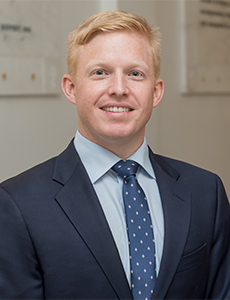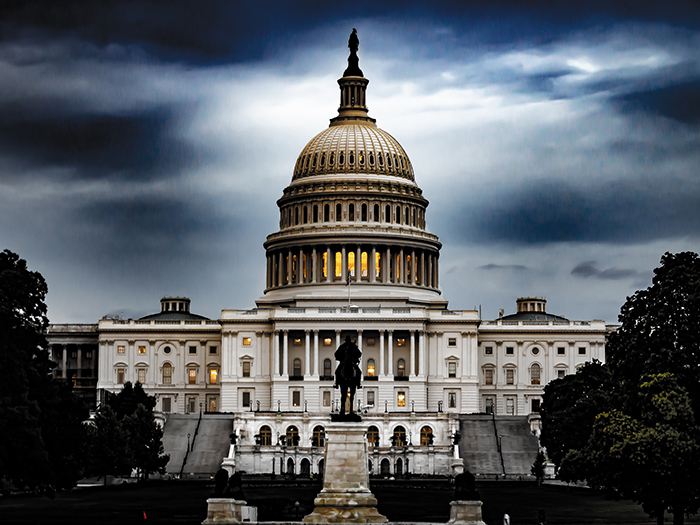Sponsored: State of Vermont
5 Ways an Active Trade Association Helps Captive Owners Thrive Amid Change

As the number of domestic domiciles increases, interest in the U.S. captive insurance industry has never been stronger. Novel uses for captives and higher risk tolerance among smaller and medium-sized businesses has fed the growth, as well as a more flexible regulatory environment.
“What makes our industry so unique is that it changes rapidly with the needs of captive owners,” said Richard Smith, President, Vermont Captive Insurance Association. “These are all factors that make the industry interesting and exciting to be in.”
But rapid growth creates its own problems.
For one, it exacerbates the talent shortage threatening the insurance sector as a whole.
“The changing demographics of the industry have certainly gotten the attention of risk managers, and captives are not immune to that,” said Ian Davis, Director of Financial Services, Vermont Department of Economic Development. Leaders who helped to form the captive industry roughly 40 years ago are preparing to retire, creating a vacuum that needs to be filled by the next generation. The problem, Smith said, is that many people considering careers in financial services or risk management simply haven’t been exposed to what a captive is or how it works.
An exit of experience and expertise has also contributed to weaker infrastructure and a lack of regulatory oversight in states just entering the captive space. As new entrants seek to replicate the success of established domiciles like Vermont, they run the risk of moving too quickly and failing to build an adequate framework or develop effective relationships with regulators and legislators.
“There is a lack of expertise at the regulatory and service provider level in some states. That has created situations where captives licensed in some of the newer domiciles are not as strong as those licensed in more established domiciles,” Smith said.
While healthy competition ultimately benefits the industry, there are certain advantages to domiciling in a state with a more established infrastructure, including an active trade association that works in tandem with state regulators to support sustainable growth.
Benefits of a Collaborative Captive Environment

Richard Smith, President, Vermont Captive Insurance Association
With 450 member organizations, the Vermont Captive Insurance Association is the largest captive association in the world, and it has existed for more than 30 years. But size and longevity don’t matter as much as its level of engagement, both among members and between the association and state government.
“We have a very active membership,” Smith said, “meaning we have active committees that help us work on regulatory, legislative and educational issues. Working with the State of Vermont, we have very strong connections with both the Department of Financial Regulation and the Department of Economic Development.”
That collaborative relationship helps to form a mutual understanding and respect, which enables the Association to initiate legislative changes that help to keep Vermont at the forefront of the captive sector.
“We really strive to bring forward consensus legislation that will help the industry grow in a prudent way. On behalf of their membership, the VCIA really takes a leadership role in consultation with the State and drives the conversation forward,” Davis said.
This level of collaboration has 5 key benefits for VCIA members:
1. A Voice in Federal Legislation and Regulation
The VCIA’s legislative input extends beyond Vermont to the federal level. Because of its size and level of expertise, the VCIA is seen by Congress and federal officials as not just an advocate for captive insurance-related issues, but an expert.
“Often times, bills or regulations will be contemplated that haven’t considered the impact on captive insurance, but if it impacts either broader financial services or the insurance industry as a whole, it will affect us as well. So it is incumbent upon us to pay attention and provide input,” Smith said.
“We are the only captive association that has representation in Washington working on behalf of the captive industry, monitoring what’s happening on Capitol Hill.”
2. A Variety of Educational Resources

Ian Davis, Director of Financial Services, Department of Economic Development
The VCIA’s annual conference provides rich educational opportunities to 1,100 attendees every year. Because its network of service providers comes with years of experience and specialized expertise in captive management, the association can convene expert panels on a number of issues facing the industry.
Its “captive roadshows” also provide an introduction to the industry for business owners thinking about pursuing their own captive. Conducted in different cities twice per year, these roadshows assemble a panel of insiders to describe the process of getting a captive off the ground.
“We bring in some of our members – captive owners – to talk about their experiences setting up their own captive, explain how it works and why they made certain choices. It’s not only Captive 101, it’s a really meaningful discussion for those interested in pursuing a captive to hear it firsthand from the owners themselves,” Smith said.
“It also helps us attract younger professionals into the industry by telling them compelling stories about what captives do and why they matter.”
3. Ample Networking Opportunities
For many new captive owners, much of their education comes from their peers. A large and active association provides ample opportunity for members to bounce ideas off of each other and provide critical feedback. VCIA’s Annual Conference brings more captive owners together than any other event in the U.S.
“Captive owners truly appreciate the fact that, when they either come to our conference or another educational venue, they have chances to network with other owners,” Smith said. “For those looking to break into the industry, there are great marketing opportunities here as well.”
4. Legitimacy and Leadership
An active association acts as a central point of information and resources, but also provides avenues for captive owners and service providers to introduce new ideas which are then vetted by other members and association leaders. This formal structure adds legitimacy to the captive owners’ voice and perspective.
“VCIA’s committee process offers a formalized method to approach challenging issues, and really positions the association in a leadership role,” Davis said. “The VCIA does a great job of bringing that level of authority and structure to what could otherwise become a haphazard process.”
5. An Association Supports Innovation and Steady Growth
Supporting prudent growth in the captive industry is critical to sustaining the level of innovation happening in this sector. In the past several years, organizations have found unique ways to utilize captive structures for emerging risks or exposures that are unattractive to the traditional marketplace. Captives offer risk management benefits far beyond lowering premiums or collecting tax benefits.
“We’ve seen the evolution of different sectors using captives for different purposes – it’s ever-changing,” Davis said. “I’m very encouraged by the fact that the association and the State can lean on each other to help usher in the future. We’re helping to lead that conversation by nature of the close relationship we have with our captive companies. We make sure to understand their needs and challenges.”
At this year’s annual VCIA conference in August, new industry professionals can participate in an “immersion day.”
“Captive Immersion will familiarize individuals who are new to the captive industry on the key services that are needed during the captive feasibility study, formation and management of a captive. These services include legal, auditing, management, actuarial, investments, and captive regulation. Industry experts from these service areas will give newcomers a complete sense of the various components and their importance in the overall captive picture,” Smith said.
In a time of rapid change, belonging to an association with a breadth of resources, expertise and relationships will provide captive owners with the support they need to grow sustainably.
To learn more about the VCIA Annual Conference, visit https://www.vcia.com/Events/AnnualConference/tabid/87/Default.aspx.
This article was produced by the R&I Brand Studio, a unit of the advertising department of Risk & Insurance, in collaboration with State of Vermont. The editorial staff of Risk & Insurance had no role in its preparation.










